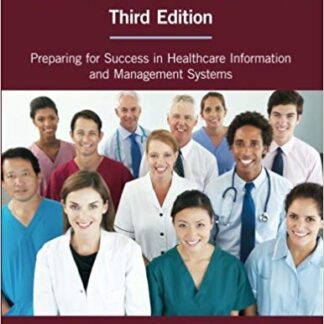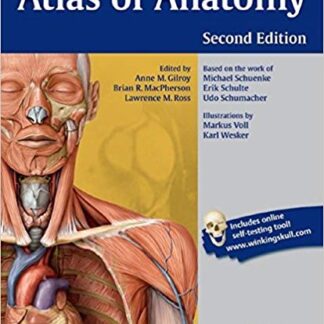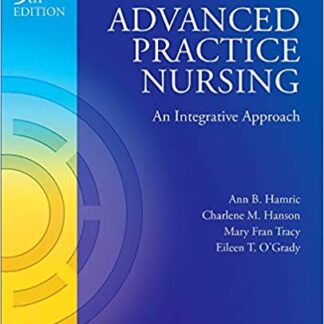Description
Hutchison’s Clinical Methods: An Integrated Approach to Clinical Practice 25th Edition by Michael Glynn, ISBN-13: 978-0702082658
[PDF eBook eTextbook] – Available Instantly
- Publisher: Elsevier; 25th edition (July 31, 2022)
- Language: English
- 532 pages
- ISBN-10: 0702082651
- ISBN-13: 978-0702082658
Sir Robert Hutchison first published his textbook on Clinical Methods in 1897 and this latest edition maintains its reputation as the go-to guide to learn the core skills every clinician needs in their everyday practice.
Medical students and doctors in training will find essential guidance to taking a full history, examining a patient and interpreting the findings. They will learn the art of understanding, contextualising, communicating and explaining, with the doctor-patient relationship firmly at the centre of their practice. These skills remain essential for every doctor, in addition to modern investigative methods.
The book covers basic principles, different patient groups and all the main body systems. Each chapter includes relevant clinical methods and offers guidance for appropriate investigations. New methods and investigations are incorporated into established patterns of clinical practice to offer a fully integrated approach.
This award-winning textbook remains as relevant today as ever and will be treasured by doctors at all levels of training and practice as an outstanding source of learning and reference.
- All chapters carefully reviewed and updated to reflect modern practice
- Written by experts in their field and reviewed by an International Advisory Board – content is relevant to a wide international readership including in the Indian sub-continent, the Middle East and Africa
- Covers all the main body systems, including the core areas of respiratory, cardiological, gastrointestinal, neurological and locomotor systems
- Text organised by system and problem to aid navigation
- Chapters can be read individually, to avoid duplication and need for cross-referencing
- Tabulated information and diagrams for clarity and conciseness
- Tailored to student needs but suitable for doctors at all levels of training and practice
- Winner of multiple awards, including the BMA book awards
- New appendix describing the clinical features of COVID-19
Table of Contents:
Cover image
Title page
Table of Contents
Copyright
Preface to the Twenty-fifth Edition
Sir Robert Hutchison MD FRCP (1871–1960)
Contributors
International Advisory Board
Acknowledgements
Section 1. General patient assessment
1. Doctor and patient: General principles of history taking
Introduction
Setting the scene
Emergency presentations
History taking
Analysing symptoms
Conclusion
2. General patient examination and differential diagnosis
Introduction
General examination of a patient
Putting it all together
Neck (while sitting forward)
Documentation and communication
Presenting a case
Summary
3. The next steps: Differential diagnosis and initial management
Introduction
Management plan
Conclusion
4. Ethical considerations
Introduction
Autonomy
Consent
Confidentiality
Resuscitation
Other ethical problems
Principles of medical ethics
Section 2. Assessment in particular groups
5. Women
Introduction
Gynaecological history
Gynaecological examination
History relating to current pregnancy
Obstetric examination
Investigations in obstetrics and gynaecology
Tests of fetal wellbeing
6. Children and adolescents
Introduction
Summary
7. Older people
Introduction
Presentation of disease in older people
History
Comprehensive geriatric assessment
8. Psychiatric assessment
Introduction
Preparation
Circumstances of the interview
9. Patients presenting as emergencies
Introduction
The importance of clinical assessment
Diagnosis versus resuscitation
The pyrexial and septic patient
The patient with chest pain
The breathless patient
The patient with hypotension or shock
The patient with diminished consciousness
The syncopal patient
The patient with seizures
The patient with delirium (acute confusion)
The patient with acute headache
The acutely weak patient
The patient with acute abdominal pain
The patient with haematemesis and/or melaena
Summary
10. Patients with a fever
Introduction
Approach to a patient with a fever—causes of fever
Examination
Investigations for infectious causes of fever
11. Patients in pain
Introduction
Definition
Classification of pain
Mechanisms of pain
The patient in pain
Treatment strategies
Conclusion
Section 3. Basic systems
12. Respiratory system
Introduction
The history
The examination
Other investigations
13. Cardiovascular system
Introduction
The cardiac history
The cardiac examination
The electrocardiogram
Clinical applications of ECG
The chest X-ray
Echocardiography
Stress echocardiography
Doppler echocardiography
Cardiovascular radionuclide imaging
Cardiac catheterization
Pathology laboratory support
14. Gastrointestinal system
General principles
Anatomy of the GI tract
Diseases of the GI tract
Investigations: (see Box 14.10)
15. Locomotor system
Introduction
General assessment: the ‘GALS’ locomotor screen
Screening history
Screening examination
Children
Recording the results
Specific locomotor history
Words
Intensity
Location
Duration
Aggravating/alleviating factors
Chronic pain syndromes
Joint disease
Non-inflammatory joint disease
Inflammatory joint disease
Distribution of joint disease
Recurrent attacks of joint pain
Episodic joint pain
Flitting or migratory joint pains
Inflammatory connective tissue diseases
Soft tissue symptoms
The bones
Examination
The bones
Fractures
The joints
Tendon sheath crepitus
Joint crepitus
Range of movement
Extra-articular features of joint disease
Examination of individual joints
The spine
The shoulder
The elbow
The forearm
The wrist
The fingers
The thumb (carpometacarpal joint)
The hand
The hip
The knee
The ankle
The foot
The gait
Hypermobility
Work-related musculoskeletal disorders
Investigations in rheumatic diseases
Tests in support of inflammatory disease
Diagnostic tests
Radiological examination
16. Nervous system
Introduction
The neurological history
The neurological examination
Cranial nerve examination
Speech
Motor system
Cerebellar system
Movement disorders
Sensation
Posture and gait
Patterns of motor and sensory signs
Cognitive function
Localizing the neurological lesion
Investigations
17. Renal and urology system
Introduction
The diagnostic process in nephrology and urology
The history
Renal and urological syndromes
Physical signs in renal and urological disease
Laboratory assessment and imaging of the kidneys and urinary tract
18. Sexually transmitted infections
Introduction
Preparation
History
Presenting complaint
The sexual history
The sexual health screen (SHS) and STI history
Risk assessment for BBV
Special groups
Genital examination
General examination
Testing
HIV infection
19. Endocrine and metabolic disorders
Introduction
The endocrine history
The examination
Investigation
Diabetes mellitus
Presenting symptoms of diabetes
Symptoms of complications of diabetes
Hypoglycaemia
Examination of the diabetic patient
Investigation
Lipid disorders
20. Skin, nails and hair
Introduction
History
Examination
Cutaneous manifestations of internal disease
Special techniques in examination of the skin
21. Eyes
Introduction
History
Examination
Eyelid, lacrimal and orbital assessment
Examination of the eye in children
Imaging
Special examination techniques
22. Ear, nose and throat
Introduction
The ear
The nose and paranasal sinuses
The throat
Appendix. SARS-CoV-2 and the COVID-19 pandemic
Index
What makes us different?
• Instant Download
• Always Competitive Pricing
• 100% Privacy
• FREE Sample Available
• 24-7 LIVE Customer Support




